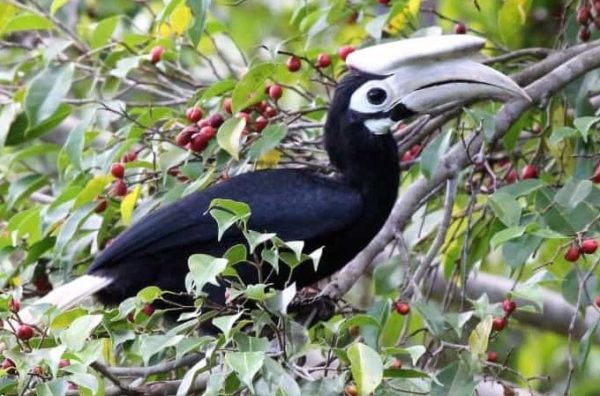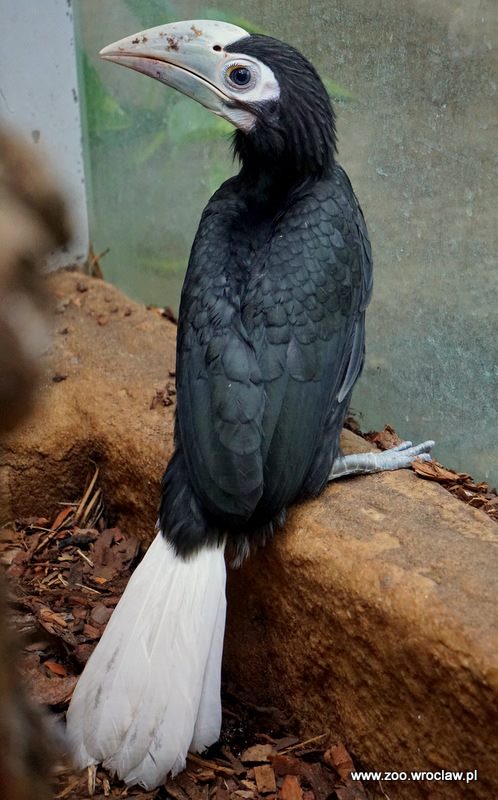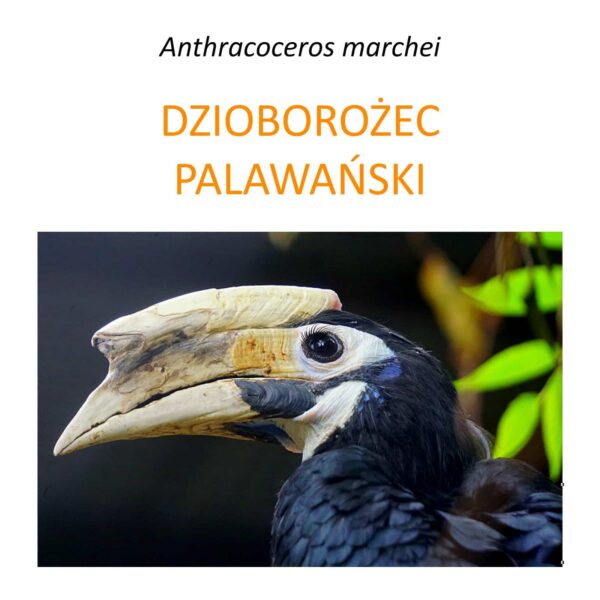Description
The Palawan hornbill (Anthracoceros marchei) is one of the least studied and most endangered bird species. It is an endemic species found only on Palawan and its satellite islands in the Philippines. Its population is predicted to decline sharply due to deforestation, hunting, and illegal trade. As a result, the IUCN classifies it as Vulnerable to extinction.
The Palawan hornbill, known locally as Talusi, inhabits forests. It grows up to 70 cm in length and weighs up to 700 g. Unlike other members of its genus, it is not as colorful. Its plumage is ink-black, except for the white tail. It has a distinctive white ring around its eyes and a whitish throat. However, its most striking feature is its light yellow, horn-like beak.


Hornbills have a fascinating breeding strategy involving a sealed nest cavity. When laying eggs, the female is “walled in” inside a tree cavity by the male, and the chicks do not emerge until they are almost independent and nearly as large as adults. The male “seals” the female inside using a natural mortar made of soil and fruit pulp (such as blackberries and cherries), which hardens into a tough covering.
The male does not abandon the female, as he feeds her and the chicks through a small opening in the sealed cavity for approximately three months. This opening also serves as a waste disposal system.
Once the chicks are ready, the female breaks out of the cavity and leads her offspring outside. This means that hornbills require specific conditions for reproduction, such as suitable tree cavities and an abundant food supply. The male’s role is crucial in protecting the female and chicks from predators—but what happens if the male is killed by a predator or a human? In that case, the female must wait for another unpaired male to take over and care for her and the young.
Palawan hornbills are omnivorous, feeding on fruits, insects, and small vertebrates.
At Wrocław Zoo, a nest camera has captured footage of a male feeding a female through the nest opening, while she tends to the chicks.
What Are We Doing?
We financially support the Katala Foundation, an organization dedicated to protecting endangered endemic wildlife in the Philippines, particularly:
- The Philippine cockatoo,
- The Philippine forest turtle,
- The Palawan porcupine,
- The Calamian deer,
- The Philippine mouse-deer,
- The Philippine pangolin,
- And the Palawan hornbill.
The Katala Foundation operates on Palawan, home to the last refuges of these species.
The foundation runs the project “Palawan Hornbill Conservation and Habitat Monitoring Program on Palawan, Bugsuk, and Pandanan Islands”, which includes: Conducting patrols to prevent illegal logging and poaching, Nest monitoring and biological research, Designing and testing artificial nest boxes.

